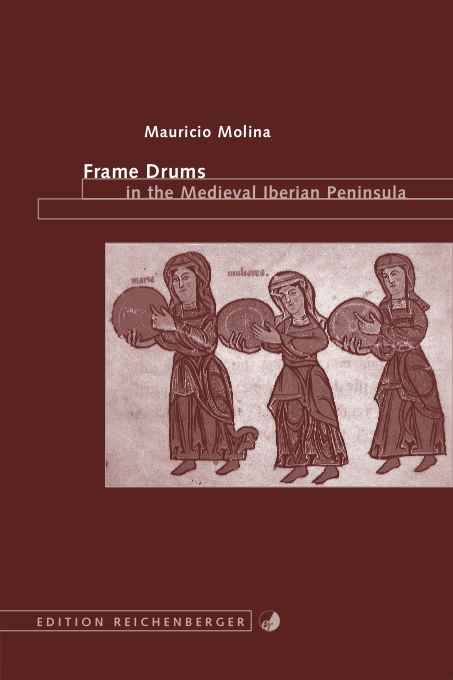|
Iconographic and literary sources reveal the widespread use of two different types of handheld frame drums on the medieval Iberian Peninsula: a round frame drum with parchment stretched only on one side of its shell, and a frame drum of square shape with parchment covering both sides of its body. The names tympanum in Latin, pandero and adufe in Castilian, and bandair and duff in Iberian Arabic were commonly used to refer to these instruments. A significant number and variety of sources demonstrate that these instruments were not only played to provide rhythmic accompaniment to recreational, civic, and paraliturgical music, but were also thought of as symbols that stood for something else not intrinsically connected to them. A comparison of medieval information with data about contemporary music traditions reveals that medieval Iberian frame drums have continued to exist without major variations in rural areas of Iberia and the culturally- and historically-related Maghreb and Latin America. This continuity allows us to corroborate and complement conclusions developed from the study of the primary sources with observations of live traditions.
In this book Dr. Mauricio Molina examines the medieval Iberian frame drum from four different perspectives. The first is organological, employed to study the construction of frame drums and to trace their historical materials in an attempt to resurrect their medieval timbres. The second is socio-anthropological, utilized to place frame drums in their historical social context. The third is symbolic, used to decipher how the instruments were transformed into symbolic objects that emphasized cultural concerns. The fourth is performative, employed to reconstruct playing technique and other aspects of frame drum performance practice. On the basis of his multidisciplinary research, Dr. Molina presents a comprehensive study of medieval Iberian frame drums and demonstrates that the unique combination of musical function and symbolic significance made the frame drum both well known and ubiquitous throughout medieval Iberia.
The American Musical Instrument Society awarded the book «Frame Drums in the Medieval Iberian Peninsula» with the 2012 Nicholas Bessaraboff Prize. This annual prize is given to the most distinguished book-length works in English which best further AMIS' goal to promote the study of the history, design, and use of musical instruments in all cultures and from all periods.
The American Musical Instrument Society ha galardonado el libro «Frame Drums in the Medieval Iberian Peninsula» con el Premio Nicholas Bessaraboff de 2012. Este premio anual se entrega a libros sobre organología que mejor representan los objetivos de AMIS de promover el estudio de la historia, el diseño y el uso de instrumentos musicales en todas las culturas y las épocas.
Further information can be found at
The American Musical Instrument Society, www.amis.org
|
|

